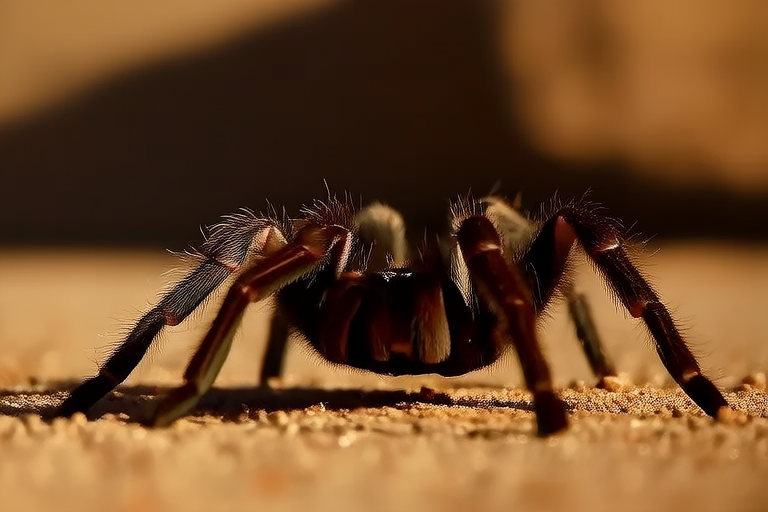
The Ultimate Guide: Caring for Your Chilean Rose Tarantula at Home
Welcome to your ultimate guide on how to care for your Chilean Rose Tarantula at home. This guide will cover everything from setting up the perfect habitat to understanding their unique behaviors and needs. Whether you’re a seasoned arachnid enthusiast or a beginner, this comprehensive resource will help ensure that your Chilean Rose Tarantula thrives in its new environment.
Habitat Setup
Setting up the right habitat is crucial for the well-being of your Chilean Rose Tarantula. These spiders require a secure, spacious enclosure with appropriate substrate and hiding spots.
Enclosure Size: A ten-gallon tank is suitable for an adult Chilean Rose Tarantula. Ensure there’s enough room for the spider to move around comfortably without feeling cramped.
Substrate: Use coconut fiber, peat moss, or a mix of both as substrate. This provides a natural environment and aids in maintaining the necessary humidity levels.
Hiding Spots: Provide several hiding spots within the enclosure. Cork bark tubes, half logs, or small clay pots work well. These items mimic the natural environment of the tarantula and provide security.
Decorations: Add some branches or artificial plants to create a more naturalistic environment. Ensure these decorations are securely placed so they don’t pose a risk of falling onto the spider.
Temperature and Humidity Requirements
Maintaining the correct temperature and humidity levels is vital for your tarantula’s health.
Temperature: The ideal temperature range for a Chilean Rose Tarantula is between 75°F and 85°F (24°C to 29°C). Use a digital thermometer to monitor the temperature inside the enclosure.
Humidity: Aim for a humidity level between 60% and 80%. You can achieve this by misting the enclosure daily or by placing a shallow water dish inside. Ensure proper ventilation to prevent stagnant air and mold growth.
Feeding Habits
Your Chilean Rose Tarantula is an opportunistic feeder, meaning it will eat various prey items when hungry. Here’s what you need to know about feeding them:
Diet: Feed your tarantula crickets, mealworms, or dubia roaches. Crickets are the most common choice due to their availability and ease of care. Feed juveniles every five to seven days, while adults can be fed less frequently, approximately once every two weeks.
Feeding Technique: Place food items directly into the enclosure. Avoid using feeding tongs, as this can stress the tarantula. Monitor the tarantula’s consumption to ensure it’s eating adequately.
Water: Provide a shallow water dish filled with fresh water. Replace the water regularly to maintain cleanliness and prevent bacterial growth.
Handling Tips
Handling your Chilean Rose Tarantula requires patience and care. Here are some essential tips:
Frequency: Handle your tarantula only when necessary. Over-handling can cause stress and potential injury.
Technique: Gently scoop the tarantula out of its enclosure using a soft, wide container. Support the spider’s entire body to avoid injuring its legs or abdomen.
Duration: Limit handling sessions to no more than a few minutes. Return the tarantula to its enclosure promptly after handling.
Health Care
Regular monitoring and preventive measures are key to maintaining your tarantula’s health.
Monitoring: Regularly check for signs of illness such as lethargy, loss of appetite, or unusual behavior. Contact a veterinarian specializing in exotic animals if you notice any concerning symptoms.
Preventive Measures: Maintain clean conditions within the enclosure. Clean the substrate and replace it when necessary. Disinfect the enclosure and accessories periodically to prevent the buildup of harmful bacteria.
Molting Process
Understanding the molting process is crucial for caring for your tarantula during this vulnerable time.
Pre-Molt Signs: Before molting, your tarantula may stop eating, become less active, and change color. It might also spin a molting web over its hiding spot.
Molting: During the molt, the tarantula will shed its exoskeleton. This process can take several hours. Do not disturb the tarantula during this time. After molting, the new exoskeleton is soft and pale. Avoid handling until it hardens, which usually takes a few days.
Post-Molt Care: Ensure the tarantula has access to water and a humid environment. Provide additional hiding spots if needed to aid in recovery.
Common Myths About Tarantulas
There are many misconceptions about tarantulas. Let’s debunk some of the most common ones:
Myth 1: Tarantulas Are Highly Venomous. While all tarantulas have venom, the venom of the Chilean Rose Tarantula is mild and comparable to a bee sting. In most cases, it won’t cause serious harm to humans.
Myth 2: Tarantulas Are Aggressive. Tarantulas are generally docile and prefer to retreat rather than confront predators. They only bite when provoked or threatened.
Myth 3: Tarantulas Are Noisy. Unlike some other spiders, tarantulas do not produce sounds. They communicate through vibrations and chemical signals.
Myth 4: Tarantulas Are Dirty. Tarantulas do not carry diseases harmful to humans. They are clean animals that groom themselves regularly.
Myth 5: Tarantulas Live Short Lives. With proper care, Chilean Rose Tarantulas can live up to 15 years or more. Females tend to live longer than males.
Conclusion
Caring for a Chilean Rose Tarantula is a rewarding experience. By following the guidelines outlined in this guide, you’ll provide your pet with a comfortable, healthy environment. Remember, each tarantula is unique, so observe your pet closely and adjust its care as needed. Enjoy the journey of learning about and bonding with your fascinating new companion.




